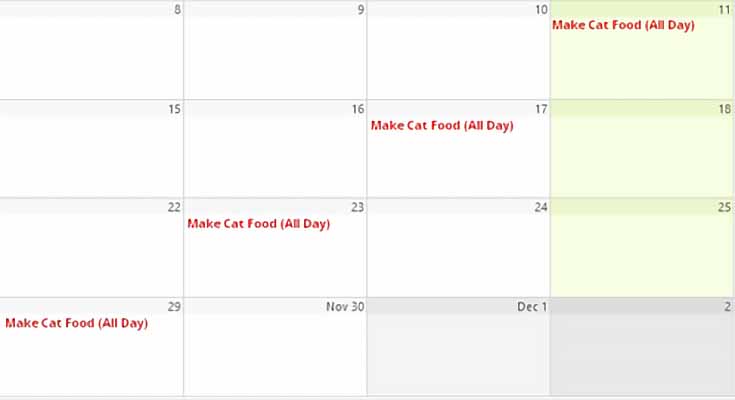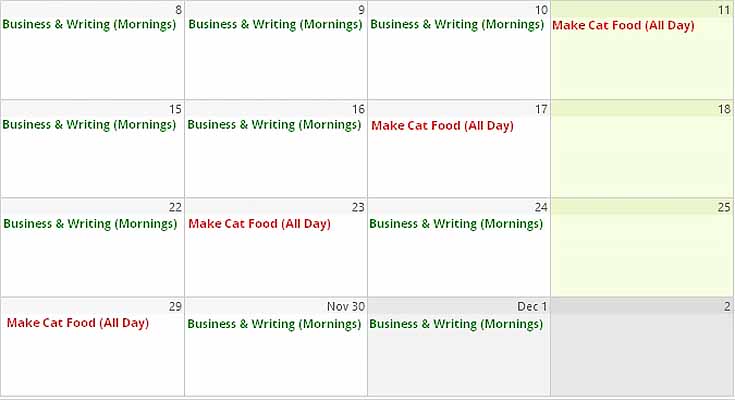Commission work: it’s probably what most non-artists—and possibly a lot of artists, too—envision when they think of professional artists earning a living from their art.
For the majority of professional artists, however, commission work is only part of the picture. They may also teach art, or work at a gallery, or have another side job. And there are always non-art obligations that go along with having a business. Not to mention family or work obligations, as well.
Whether you do a lot of commissions or just a few, it’s important to know how to set due dates and schedule your time. I’ve learned this firsthand myself, most of it by trial and error. And today I’m going to share some tips that have worked well for me.
You’ll see that it’s not only about sticking to a plan. . . it’s also about communicating to clients (and potential clients) when they can expect their finished pieces. And that means you’ll need to know for yourself how long it takes you to create.
This leads me to my first tip:
1. Understand how long it takes you to make art
Don’t overlook this fairly obvious and important step!
If you haven’t created at least ten pieces, you really don’t know how long it takes you to create one piece on average. You can only guess, and when it comes to setting deadlines for paying clients, guessing is a path to disaster.
Track your time if you have to, but make sure you have a good understanding of how long it takes to create any given piece from start to finish before you accept a commission.
You should also create pieces of different sizes. Painting a portrait that’s twice as big as another doesn’t necessarily mean it will take twice as long. It may actually take three or four times as long, and the only way to know for sure is to have painted larger pieces.
2. Remember your “must do” obligations
Nobody can know in advance all the outside obligations that are going to arise in the coming weeks, but you CAN know your regular and recurring tasks. Those should always be considered when scheduling your commission due dates.
Here’s a personal example: we have an older, diabetic cat that requires special food. My husband discovered that making our own cat food is far less expensive than buying it, so that’s what we do.
We know how long each batch of food lasts (one week), and how long it takes to prepare a batch (half a day.) With set up, cooking, grinding, canning, and clean up, I allow a full day for that activity, one day a week.
This is one of those things that “must be done” so I put that on the calendar first. After all, if the cats aren’t happy, I don’t get much work done! :)
So here’s what a small section of my calendar looks like at the start of each month:
Take a minute to think about what non-art obligations you have.
They could be a job, family responsibilities, or volunteering. . . whatever they are, block those off your calendar first, for the amount of time each one requires. The time you have left is what you have available for art.
3. Schedule your art-related obligations
This category consists of all the “art” things you need to do, outside of what the commission will require. I blog regularly so I need to set aside time each day to write, edit, and illustrate posts. I also do regular freelance writing, so I set aside time for that, too.
I also try to get my administrative work done in the morning. So for each work day, I block off the time spent on each of those things. That same section of my monthly calendar starts looking like this:
Take a look at your daily routines and see when you spend time doing regular things such as business administration, blogging (if you blog), marketing, and anything else you do that’s related to art. Get those things on your calendar up-front, so you don’t forget.
4. Account for creative/creating time
According to the calendar above, I have roughly thirteen afternoons available every three weeks to create art or approximately 39 hours. I can now begin to calculate how many days it will take to finish a commissioned piece.
For example, if I generally require 40 hours to complete a single 16×20 piece, then I can look at my calendar and see that it will take about fourteen days to get that piece done (40 hours divided by three hours per day equals 13 days and one hour.)
5. Add a cushion for emergencies
Life happens. Most of your clients will understand if you have a problem that keeps you from work if you’re upfront in letting them know. (Hospitalization or illness, for example, other family emergencies, or overtime at work.) But you still need to plan for the unexpected when setting deadlines.
How much extra time you need is a question you’ll have to answer for yourself. For some artists, a week or two of cushion is sufficient. For others, doubling the amount of time they think they need might be advisable.
Consider your working methods and allow for such things as:
- Drying time if you work in wet media
- Trouble-shooting or problem-solving tricky sections
- Unforeseen difficulties with materials or process
- Having to start over (yes, it does happen)
You won’t always need that kind of cushion, but it’s nice to have when you do need it. And there’s nothing wrong with getting done with a commission early and amazing your client with a sooner-than-expected delivery!
6. Stick to your plan
As soon as you’ve accepted that commission and have the first payment in hand, be diligent in doing the work. You’ve put a lot of time and effort into coming up with the deadline, and working with the client to get the process started. Now is not the time to slack off.
If you calculated you could work three hours a day on the artwork, then work three hours a day on it every day from the start. If you find yourself getting behind, set aside extra time in your schedule. A weekend afternoon, maybe. Or evening hours.
This is another place where planning your schedule in advance can help you—you’ll know where you can squeeze in a few extra working hours if needed.
7. Have a backup plan if things go wrong
No matter how well you plan, the time will come when it’s simply impossible to meet a deadline. When that happens, it’s far better to let your client know there will be a delay rather than let the deadline pass in silence. Know when and how you’ll contact your client. What will you say to them? What will you offer as compensation?
This is probably the most difficult thing in the world to do for a lot of commission artists, myself included. It’s not pleasant having to admit to a client that you can’t keep your word, regardless of the explanation. But I do believe it’s the right thing to do. And at least let them know what you’re doing to make it right.
In the end, most buyers of fine art—and especially most buyers of commissioned art—realize that it takes time to create custom work. Most of them are willing to wait however long it takes (and you’re better off not working with those clients who are not).
The key is knowing how long it takes you to create and being able to stick to a schedule of your own making. If you can do that (with or without the tips I’ve included above) I guarantee you’ll end up with a lot of happy clients!
This post may contain affiliate links.


